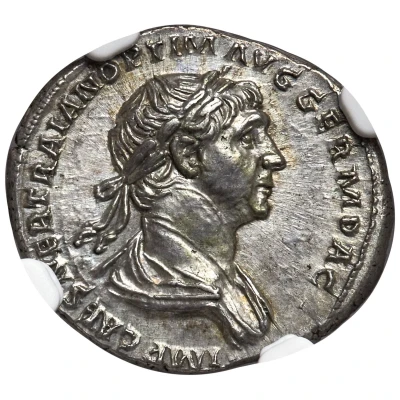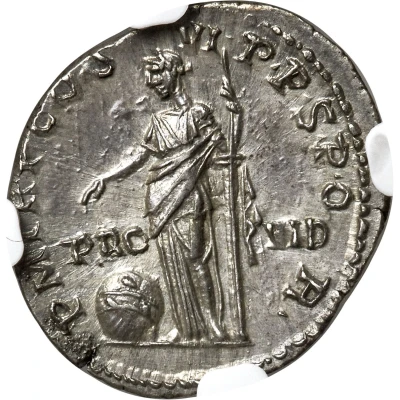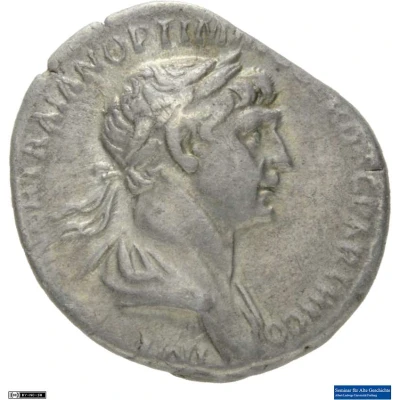


© Heritage Auctions
Denarius - Trajan P M TR P COS VI P P S P Q R PROVID; Providentia; without Parthico
| Silver | 3.24 g | 19 mm |
| Issuer | Rome › Roman Empire (27 BC - 395 AD) |
|---|---|
| Emperor | Trajan (Marcus Ulpius Traianus) (98-117) |
| Type | Standard circulation coin |
| Years | 114-117 |
| Value | 1 Denarius |
| Currency | Denarius, Reform of Augustus (27 BC – AD 215) |
| Composition | Silver |
| Weight | 3.24 g |
| Diameter | 19 mm |
| Shape | Round (irregular) |
| Technique | Hammered |
| Orientation | Variable alignment ↺ |
| Demonetized | Yes |
| Updated | 2024-10-05 |
| Numista | N#377185 |
|---|---|
| Rarity index | 100% |
Reverse
Providentia, draped, standing left, pointing with right hand at large globe to left, and holding vertical sceptre in left, with left elbow resting on column.
Script: Latin
Lettering:
P M TR P COS-VI-•P•P•S•P•Q-R•
PRO-VID
Unabridged legend: Pontifex Maximus, Tribunicia Potestate, Consul Sextum, Pater Patriae, Senatus Populusque Romanus, Providentia.
Translation: High priest, holder of tribunician power, consul for the sixth time, father of the nation, The senate and the Roman people, foresight.
Comment
Variant without lettering Parthico (conqueror of the Parthians) on obverse.Interesting fact
The Denarius - Trajan coin was minted during the reign of Emperor Trajan, who ruled the Roman Empire from 98 to 117 AD. The coin's design features the goddess Providentia on the reverse, which is an interesting fact in itself. Providentia was the goddess of foresight and forward planning, and her presence on the coin suggests that the Roman Empire was placing a strong emphasis on careful planning and preparation during Trajan's reign. Additionally, the coin's obverse features a portrait of Trajan himself, which is notable for its detailed and realistic depiction of the emperor's facial features. The coin's silver content and weight of 3.24 grams also make it a valuable and collectible item for numismatists. Overall, the Denarius - Trajan coin is a fascinating piece of history that provides insight into the Roman Empire's economic, political, and cultural practices during the 2nd century AD.



